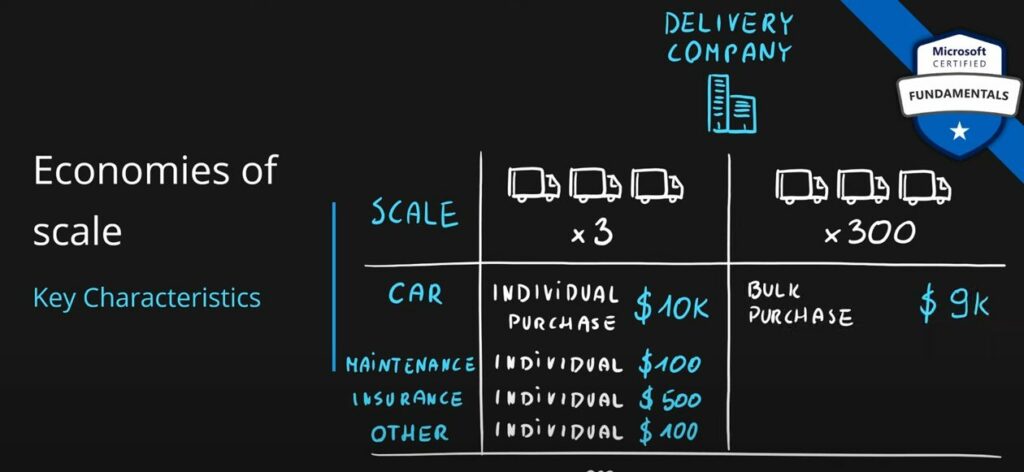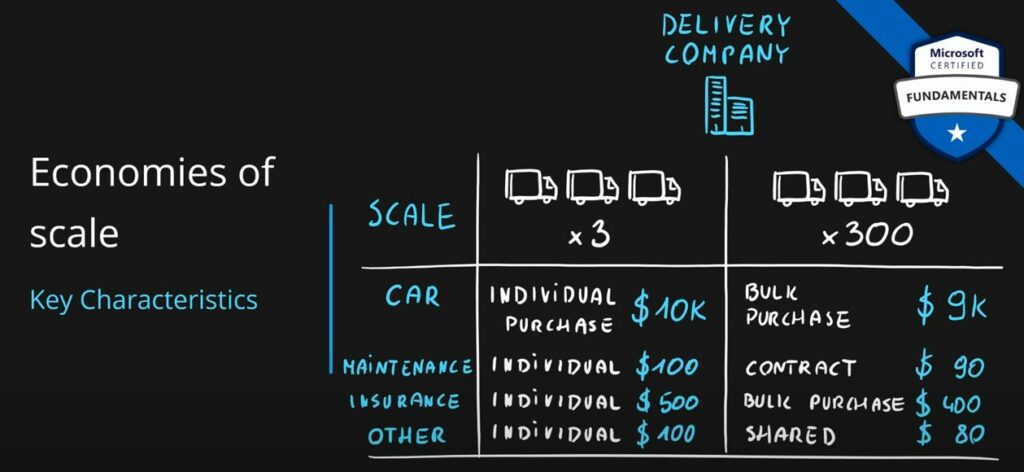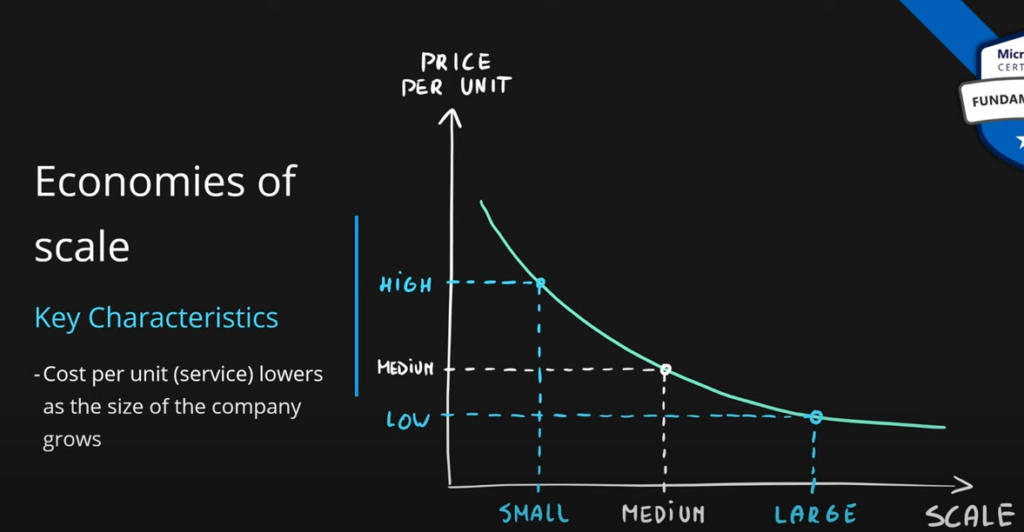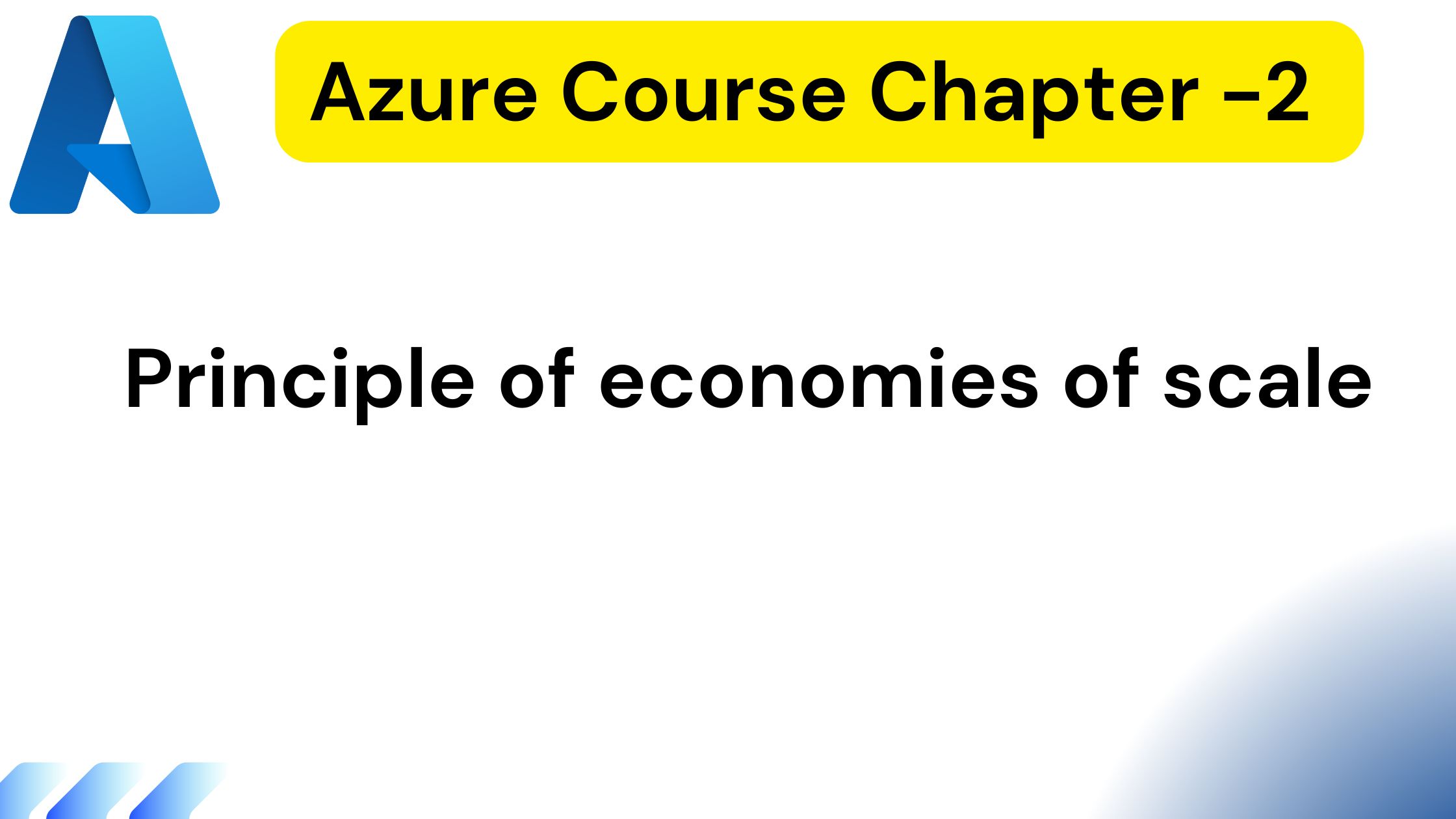Hii,I hope you guys have checked over Chapter 1 of this Azure MDM Course. In the second chapter We’ll be talking about Economies of Scale and how this principle defines the cost of your other services. Stay tuned for the second chapter!
Learning Objectives
Let’s start with learning objectives. The goal of this episode is to help you understand the principles of economies of scale and how this principle explains the cost of other services. To explain this principle, I will use a simplified example using a delivery company that delivers packages to its customers.
Starting a Small Company
When you start your own company, you usually start at a very small scale. For instance, by purchasing three delivery trucks. When you do that, you will need to first of all buy them. Since the company is very small and you’re just starting, you will most likely make individual purchases for each of those cars. Let’s imagine you paid $10,000 for each.

Regardless if those cars are used or not, you will need to spend some money on the maintenance of those cars. Because your company is very small, you cannot make any contracts, so you will need to pay individually for each repair and maintenance that you need to perform on your own cars. Each car, of course, needs to be insured, so that’s an additional cost that you need to cover individually.
As you can imagine, there will be plenty of other costs that you will need to incur when running your own company. Based on the costs you need to incur and the number of customers that you have, you will need to calculate the price of your service in order to stay profitable and remain in the market. This price is called the price per unit, meaning the price you need to charge for the delivery of your package for your company to stay profitable.
Growing Your Company
Let me explain to you what happens if your company grows in size. If your scale goes from three cars to, for instance, 300, because your company is already big, you might be able to buy your cars in bulk from a dealership at a discounted price. Instead of buying them for $10,000, maybe you buy them for $9,000. Again, for maintenance, you will be able to sign a contract with a car repair shop, lowering the cost of maintenance required for your cars.

The same goes for insurance because you can buy insurance in bulk. If you have some shared services, maybe hire some additional staff to maintain your company. You will also be able to reduce the price per car that is required to maintain your company because the scale of your company is much greater than before.
You are now able to handle many more customers without sacrificing the quality of your service, allowing you to lower the price per unit. As you get more benefits internally by having a large company, you become more efficient operationally, and you can share those benefits with your customers by reducing the price per unit.
Summary of Economies of Scale
To quickly summarize, as your company grows, your price per unit lowers because companies become more efficient at what they do. If you have a small company, your price per unit will be quite high. If you have a medium company, your price per unit will be better but still in a medium range. If you have a very large company, your price will be quite low and very competitive in the market.

This principle perfectly describes what is happening with the cloud. As the cloud grows and has more customers, the price of their services will go down because big companies like Microsoft will get more efficient at what they do. In the case of Microsoft, they will get more efficient at building new data centers, getting better prices for the hardware. There will, of course, be hardware advancements which will again lower the price. When this happens and Microsoft wants to stay competitive, the prices of the services that it offers will also go down.
Conclusion
That’s really it! This is how economies of scale work and how they drive the cost of your other services.
Thank you guys for watching! If you like what I do, support the website by subscribing, liking, and commenting, or by sharing this with your friends. If you want to see the next article, simply bookmark this website. See you there!
